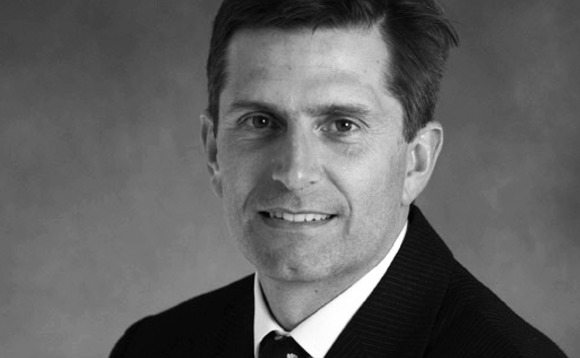
GP Profile: Pamplona Capital Management

- TMT fund 25% invested to date
- TMD Friction returned 5.5x money
- Six private equity funds to date
Pamplona Capital Management closed its fifth fund for private equity investments on €3bn this summer. The firm's co-founder John Halsted talks to unquote" about returns on distressed debt deals and the firm's origins
"There was no real reason for another private equity firm to set up [when we did]," says co-founder and managing partner John Halsted of Pamplona Capital Management. "There never is. There is always talk in the air of too much money and not enough deals. It is the same in every cycle."
American-born Halsted came to Europe in 2004 and set up Pamplona with business partner Alex Knaster in 2005. Since then, the GP has raised five generalist private equity funds, and, in May 2017, launched a $1bn TMT fund based in Boston.

Fund I raised €320m in 2005 and made seven investments; Fund II raised €1.3bn in 2007 and made eight investments; Fund III raised €2bn in 2011 and made seven investments; Fund IV raised €3bn in 2014 and has currently made 11 investments; and Fund V raised €3bn this summer and has made two investments to date.
"When we started, we focused on central Europe and part of our strategy was looking at things that were not everyone's cup of tea, deploying equity cheques of €30-40m," says Halsted.
There was less competition when Pamplona was founded, even in Germany where people were more regionally focused. The GP had a comfort level there as it had some experience and a handful of German speakers, Halsted explains.
The raising of Fund II was a big shift for the GP, raising money to the tune of €1bn. "We put some money into a couple of large deals and then Lehman's went bust," says Halsted.
The crash that ensued did bring benefits to Pamplona though, namely in the guise of German automotive parts supplier TMD Friction, which the GP acquired out of administration in 2009. The predicament of the heavily debt-ladened and cash-strapped company created an opportunity for Pamplona. It ended up reaping a 5.5x money return on exit in 2012.
"A lot of people claim to be distressed investors but we were never dedicated to that strategy alone, as we were led by the company and its predicament," says Halsted. "We don't invest in distressed for the sake of it being distressed."
Even though TMD was ultimately a success, Pamplona is less eager to jump two feet into the distressed investing world. Although the parameters of its fund structure allows the GP to invest up to 25% in non-equity investments, LPs still expect regular equity returns and as a debt investor that is difficult, says Halsted.
"If you hit 12% return plus 1.4x money – this is outstanding for a distressed debt fund but not so great for private equity," he says, adding that some managers have siloed funds targeting 10-12% returns because of this.
Westward bound
Launching the €2bn Fund III in 2011 was another turning point in the history of Pamplona. A year later, the GP opened an office in the US. From the time Pamplona started in Europe, it had the possibility to go to the US – 20% was permitted – but it did not. This was because there were no boots on the ground and enough opportunities in Europe, Halsted explains.
"But in Fund III we didn't feel like we were finding enough deals, and although everyone says the opportunities in Europe are better, which could be true, it became more difficult to pull out an opportunity depending on which jurisdiction you are in," says Halsted, pointing out that London is the natural hub for Europe while the US has many different hubs such as Chicago and Los Angeles.
The setting up of the NY office has reaped benefits, with Halsted believing that many of the deals executed since would not have been possible without the US office.
In the case of Iceland-headquartered pharma group Alvogen, the US presence was key. Many European players were interested but the bridge was the US office since the GP could prove it understood the US market, which amounts to 50% of the global drug consumption.
As of today, the geographical split is 50:50 between the US and Europe, with the potential for the balance to be tipped towards the US, especially with the Brexit cloud hanging over the industry.
Pamplona trait and challenge
A differentiating trait of Pamplona is that as managers, they co-invest 5%, compared to some others who put in only 1-2%, says Halsted.
As for co-investing with its LP base, Pamplona is open to the approach, though it has not executed a timely co-invest as yet. It has done post-syndication co-investments, such as with Ontario Teachers' Pension Plan in French funerals business OGF and CoinMach.
"Private equity still looks more attractive on a relative basis compared to other asset classes but on the whole everything is more expensive, so we'll have to be more patient and more picky," says Halsted, concluding that the challenge is not just about buying great companies anymore; it is that great has to become greater.
Key People
• Alex Knaster is the founder, chairperson and CEO of Pamplona Capital Management. Prior to setting up Pamplona, he was CEO of Alfa Bank and managing director at Credit Suisse.• John Halsted, co-founder and managing partner, was previously chief investment officer of Beacon Venture Partners and a senior vice-president of US real estate firm Beacon Capital Partners. Prior to this, he was vice-spresident of the Harvard Private Equity Group.
Latest News
Stonehage Fleming raises USD 130m for largest fund to date, eyes 2024 programme
Multi-family office has seen strong appetite, with investor base growing since 2016 to more than 90 family offices, Meiping Yap told Unquote
Permira to take Ergomed private for GBP 703m
Sponsor deploys Permira VIII to ride new wave of take-privates; Blackstone commits GBP 200m in financing for UK-based CRO
Partners Group to release IMs for Civica sale in mid-September
Sponsor acquired the public software group in July 2017 via the same-year vintage Partners Group Global Value 2017
Change of mind: Sponsors take to de-listing their own assets
EQT and Cinven seen as bellweather for funds to reassess options for listed assets trading underwater








